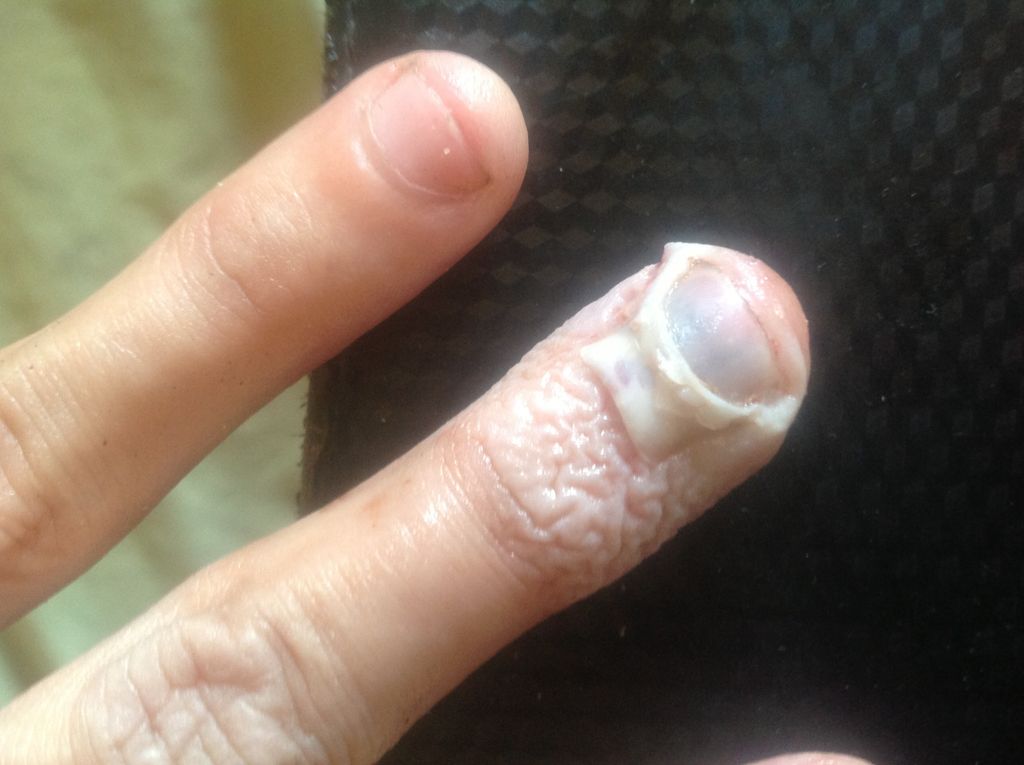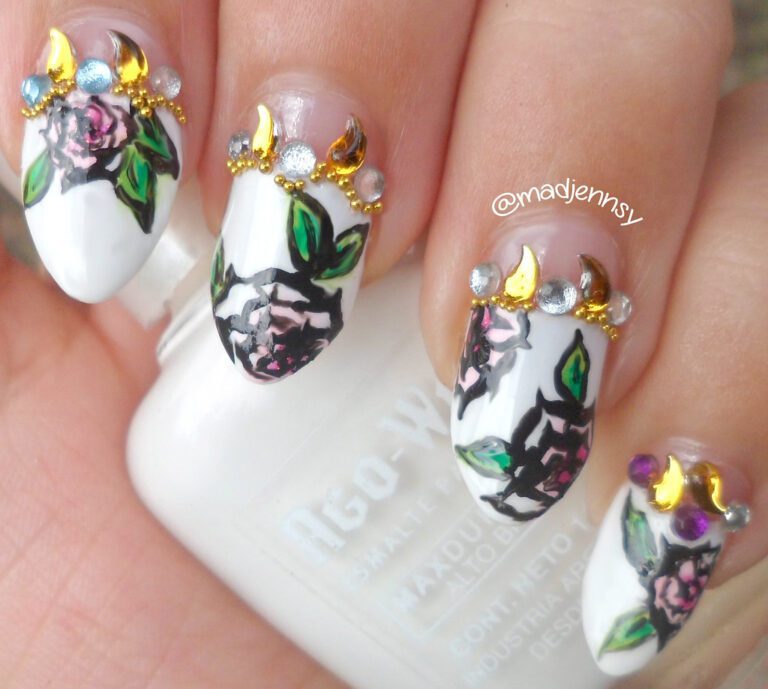“Beneath the Surface: Where Nails Begin Under the Skin”
Deprecated: mb_convert_encoding(): Handling HTML entities via mbstring is deprecated; use htmlspecialchars, htmlentities, or mb_encode_numericentity/mb_decode_numericentity instead in /home/u654140373/domains/nailinspire.com/public_html/wp-content/plugins/kadence-pro/dist/elements/elements-init.php on line 1267
Deprecated: Function utf8_decode() is deprecated in /home/u654140373/domains/nailinspire.com/public_html/wp-content/plugins/kadence-pro/dist/elements/elements-init.php on line 1275
In this article, we delve into the intricate world of nails, exploring the anatomy, growth cycle, common disorders, nutritional requirements, lifestyle impacts, and medical insights related to nail health. Understanding the subdermal origins of nails provides valuable insight into their care and maintenance. Let’s uncover the secrets beneath the surface of nail formation and maintenance.
Key Takeaways
- Proper nutrition, including essential vitamins and minerals, is crucial for healthy nail growth.
- Stress and poor grooming habits can have adverse effects on nail health, emphasizing the importance of self-care and stress management.
- Nail changes can serve as indicators of underlying systemic diseases, highlighting the diagnostic value of nail examination.
- Fungal infections, nail psoriasis, and trauma are common disorders that originate beneath the surface, requiring specialized care and attention.
- Understanding the nail growth cycle and the role of the nail matrix provides valuable knowledge for maintaining healthy and strong nails.
Anatomy of the Nail Unit
The Nail Matrix: The Birthplace of Nails
The nail matrix, located at the base of the nail, is a crucial component in the formation of nails. It is responsible for producing the cells that develop into the nail plate. This highly specialized tissue is rich in stem cells and is protected by the proximal nail fold. The matrix is where the magic of nail growth begins, and its health is essential for the overall appearance and strength of the nails. Understanding the intricate processes within the nail matrix provides valuable insights into nail health and development. It’s a dynamic environment that requires proper care and attention to maintain optimal nail growth and quality. The delicate balance of cell production and differentiation in the matrix determines the characteristics of the nails, making it a focal point in nail care and maintenance.
Nail Bed and Nail Plate: Understanding the Foundation
The nail bed and nail plate form the fundamental structure of the nail unit. The nail bed, also known as the matrix, is the area where nail cells are produced, providing the building blocks for nail growth. It is essential for the nourishment and support of the nail plate, which is the visible part of the nail. The nail plate is composed of keratin, a tough protein that gives the nail its strength and resilience. Understanding the intricate relationship between the nail bed and nail plate is crucial for maintaining healthy and beautiful nails.
To illustrate the significance of this relationship, consider the following table:
| Nail Bed | Nail Plate |
|---|---|
| Matrix where nail cells are produced | Visible part of the nail |
| Provides building blocks for nail growth | Composed of tough keratin |
| Nourishes and supports the nail plate | Gives the nail its strength and resilience |
It’s important to remember that the health of the nail bed directly impacts the appearance and strength of the nail plate. Proper care and nourishment of the nail bed are essential for promoting healthy nail growth and maintaining overall nail health.
Tip: Nourishing the nail bed with moisturizing treatments and protecting the nail plate from excessive trauma can significantly improve the condition of your nails.
The Role of the Cuticle and Nail Folds
The cuticle and nail folds play a critical role in the overall health and protection of the nail unit. The cuticle, also known as the eponychium, is a layer of clear skin located along the bottom edge of your finger or toe. This tissue serves as a seal between the nail plate and the surrounding skin, preventing pathogens from entering and causing infection.
The nail folds are the slits of skin that frame the nail plate on three sides. They provide stability to the nail unit and contribute to the shape of the nail. Proper care of the cuticle and nail folds is essential to maintain the integrity of this protective barrier. Regular moisturizing with products such as nail cuticle oil can enhance the flexibility and resilience of the nails, reducing the risk of breakage.
Tip: Gently pushing back the cuticle during regular nail care can help maintain the health of the nail unit, but it should be done with care to avoid damaging this delicate area.
It’s important to recognize that disorders of the cuticle and nail folds can lead to significant nail problems. For instance, an inflamed cuticle, known as paronychia, can be painful and may require medical attention if not treated promptly.
The Growth Cycle of a Fingernail

Phases of Nail Development
The growth of a fingernail is a continuous process that can be divided into three distinct phases: the anagen, catagen, and telogen phases. During the anagen phase, the cells in the nail matrix proliferate rapidly, contributing to the bulk of nail growth. This phase can last several years for fingernails.
In the subsequent catagen phase, growth slows down as the cells begin to harden and the nail takes its shape. This transitional period is relatively short.
Finally, the telogen phase is a resting period where the nail does not grow, and the old nail prepares to be replaced by new growth. This phase can last for a few months before the cycle restarts with the anagen phase.
Tip: To support healthy nail development, it’s important to maintain a balanced diet and protect the nails from physical damage during each phase of growth.
Factors Influencing Nail Growth Rate
Several factors play a pivotal role in determining the rate at which nails grow. Genetics is often considered the primary determinant, as it sets the baseline for individual growth rates. However, other elements such as age, hormonal changes, and the season can also significantly influence nail growth. For instance, nails typically grow faster in younger individuals and during the warmer months.
External factors, including one’s diet and exposure to chemicals, can either promote or hinder nail development. A diet rich in proteins, vitamins, and minerals is essential for healthy nail growth. On the other hand, frequent contact with harsh chemicals or water can weaken nails, slowing their growth. Additionally, lifestyle choices such as smoking can impair circulation, further affecting the growth rate.
Stress is another factor that can impact nail health. High stress levels can lead to conditions like nail biting or even temporary cessation of nail growth, known as onychomadesis. It’s crucial to manage stress and maintain good grooming habits to support optimal nail growth.
Tip: Regular moisturization of the nails and cuticles can help protect against damage and maintain a healthy growth environment.
Common Disorders Originating Beneath the Surface

Fungal Infections: When Nails Meet Pathogens
Fungal nail infections, also known as onychomycosis, are a prevalent and persistent condition that affects millions of individuals worldwide. This condition causes nails to become discolored, thickened, and distorted, often leading to dryness and brittleness. In severe cases, the infection can even cause the nail to separate from the nail bed. It’s essential to be mindful of preventive measures and early treatment to maintain healthy nails and prevent the spread of the infection. Regular hygiene practices and proper nail care play a crucial role in minimizing the risk of fungal nail infections. Additionally, seeking professional advice and treatment is advisable for effective management of this condition.
Nail Psoriasis: A Look at Autoimmune Impact
Nail psoriasis is a chronic autoimmune condition that affects the growth and appearance of nails. It often manifests as pitting, discoloration, and abnormal nail growth. The condition can be both painful and cosmetically disfiguring, impacting the quality of life for those affected.
The development of nail psoriasis is closely linked to the health of the nail matrix, the area under the skin where nail growth begins. Inflammation in this region can lead to the telltale signs of the condition. While there is no cure for psoriasis, treatments are available that can help manage symptoms and improve nail health.
Tip: Keeping nails trimmed and avoiding injury can help minimize the effects of nail psoriasis.
Lifestyle changes and medication can play a role in managing the symptoms. Here’s a list of common approaches:
- Topical treatments to reduce inflammation
- Light therapy to slow cell growth
- Systemic medications for more severe cases
It’s important for individuals with nail psoriasis to consult with a healthcare provider for a tailored treatment plan.
Trauma and Its Effects on Nail Health
Nail trauma can result from various incidents, ranging from minor accidental bumps to more severe injuries. Such trauma often leads to immediate and sometimes lasting changes in the nail’s appearance and structure. For instance, white spots on the nails are commonly attributed to minor impacts that disrupt the nail matrix, while more significant injuries can cause a nail to turn black due to bleeding under the nail plate.
Subtle changes in nail health, such as peeling or longitudinal ridging, may also signal past trauma. These conditions can weaken the nail, making it prone to splits or breaks. It’s crucial to protect nails from injury to maintain their health and aesthetics. Here are some preventative measures:
- Wear protective gloves during manual work
- Keep nails trimmed and filed to avoid accidental snags
- Avoid using nails as tools to prevent undue stress
Tip: If you experience a nail injury, it’s important to monitor the nail for signs of infection or abnormal growth. Consult a healthcare professional if you notice persistent pain, discoloration, or changes in nail shape.
Nutritional Building Blocks for Healthy Nails

Vitamins and Minerals Essential for Nail Growth
Vitamins and minerals play a crucial role in supporting healthy nail growth. Biotin, also known as vitamin B7, is essential for the strength and resilience of nails. Additionally, vitamin C contributes to collagen production, which is vital for nail structure and health. Other important nutrients for nail health include vitamin E and iron. These nutrients work together to promote nail growth and maintain their overall health. Here’s a list of some common vitamins and minerals essential for healthy nails:
| Nutrient | Role |
|---|---|
| Biotin (Vitamin B7) | Strength and resilience |
| Vitamin C | Collagen production |
| Vitamin E | Nail structure and health |
| Iron | Promotes nail growth |
It’s important to ensure that your diet includes these essential nutrients to support the health and vitality of your nails. Remember, a balanced and nutrient-rich diet is key to maintaining strong and beautiful nails.
The Impact of Diet on Nail Formation
A balanced diet rich in essential nutrients is crucial for promoting healthy nail formation. Protein, biotin, and vitamins such as A, C, and E play a significant role in supporting nail growth and strength. Incorporating foods like eggs, almonds, and whole grains can provide the necessary building blocks for optimal nail health. Additionally, maintaining adequate hydration levels is essential for nail moisture and flexibility. Ensuring a well-rounded diet that includes these key nutrients can contribute to overall nail health and resilience.
The Impact of Lifestyle on Subdermal Nail Formation

How Stress Affects Your Nails
Stress can have a significant impact on the health of your nails. Cortisol, the stress hormone, can disrupt the nail growth cycle, leading to slower growth and increased brittleness. Additionally, stress-induced habits like nail biting and picking can cause damage to the nail bed, resulting in weakened nails. It’s important to manage stress levels to maintain healthy nail growth and strength. Here are a few tips for managing stress:
The Consequences of Poor Grooming Habits
Neglecting proper nail care can lead to a host of issues, often beginning beneath the skin where nails originate. Poor grooming habits, such as irregular cleaning and improper trimming, can compromise the nail’s integrity and open the door to infections. For instance, inadequate cleaning may allow dirt and bacteria to accumulate under the nail plate, increasing the risk of bacterial infections.
-
Inappropriate nail care tools or techniques can cause damage to the nail matrix, the area under the skin where nail growth begins. This damage can result in irregular nail shapes and even permanent deformities.
-
Overzealous cuticle removal or aggressive pushing back of the nail folds can expose the nail bed to pathogens, leading to conditions like paronychia.
Tip: Always use sterilized tools for nail care and be gentle with the skin around your nails to prevent unnecessary damage and infection.
- Using harsh chemicals without proper protection can weaken nails and lead to splitting or peeling. It’s essential to wear gloves when handling cleaning agents or other chemicals to protect the nails and surrounding skin.
The consequences of poor grooming habits are not only cosmetic but can also significantly affect nail health. Establishing a routine that includes gentle handling and proper hygiene can go a long way in maintaining strong and healthy nails.
Medical Conditions Revealed by Nail Analysis

Nail Changes as Indicators of Systemic Diseases
The examination of nails can provide clinicians with valuable clues about a patient’s overall health. Certain nail changes may be indicative of systemic diseases, offering a non-invasive window into the body’s internal workings. For instance, the appearance of Terry’s nails, characterized by a ground-glass opacity and a narrow band at the tip, can signal liver disease, heart failure, or diabetes.
- Clubbing, where the nails become convex and bulbous, often points to lung disease or cardiovascular issues. Koilonychia, or spoon-shaped nails, may suggest iron-deficiency anemia. Brittle nails, while commonly a result of external factors, can sometimes be associated with thyroid disorders or psoriasis.
Tip: Regular observation of nail health can be a simple yet effective way to monitor for signs of systemic conditions. Early detection through nail changes can lead to timely medical intervention.
While not all nail abnormalities are cause for concern, persistent or unexplained changes should prompt further medical evaluation. A comprehensive nail examination can reveal subtle signs that, when combined with other symptoms, contribute to a more complete diagnostic picture.
The Diagnostic Value of Nail Examination
Nail examination can serve as a non-invasive diagnostic tool, offering clues to a patient’s overall health. Changes in nail color, texture, or growth patterns may indicate underlying medical conditions. For instance, pale nails can suggest anemia, while yellowing might be a sign of liver disease. Nail clubbing, a deformation of the nail, is often associated with lung diseases.
Physicians can use nail examination as a preliminary assessment before ordering more invasive tests. It’s a practice that underscores the importance of a thorough visual inspection in the diagnostic process.
Tip: Always consider changes in nails in conjunction with other symptoms to avoid misdiagnosis.
Here’s a list of common nail changes and their potential implications:
- White nails: liver diseases, kidney failure
- Spoon nails: iron deficiency anemia
- Pitting or ridges: psoriasis or arthritis
- Terry’s nails: liver cirrhosis, congestive heart failure
By understanding these associations, healthcare providers can make more informed decisions about further diagnostic testing and management.
Nail analysis can reveal a lot about your health. From vitamin deficiencies to underlying medical conditions, your nails can provide valuable insights into your well-being. At NAILinspire.com, we’re dedicated to sharing the latest information on nail health and care. Visit our website to explore our extensive library of nail art designs and discover how your nails can inspire you to prioritize your health.
Frequently Asked Questions
What is the function of the nail matrix?
The nail matrix is responsible for producing the cells that become the nail plate and is essential for nail growth.
How do fungal infections affect the nails?
Fungal infections can cause discoloration, thickening, and crumbling of the nails, leading to potential discomfort and cosmetic concerns.
What are the signs of nail psoriasis?
Nail psoriasis may cause pitting, ridges, and discoloration of the nails, often accompanied by skin symptoms such as redness and scaling.
Can trauma to the nail bed cause permanent damage?
Severe trauma to the nail bed can result in permanent deformity or loss of the nail, while minor trauma may lead to temporary changes in nail appearance.
How does diet affect nail health?
A balanced diet rich in vitamins and minerals, particularly biotin, iron, and zinc, is crucial for promoting healthy nail growth and strength.
What medical conditions can be detected through nail analysis?
Nail changes can provide valuable insights into systemic diseases such as liver or kidney disorders, anemia, and certain skin conditions, prompting further medical evaluation.





